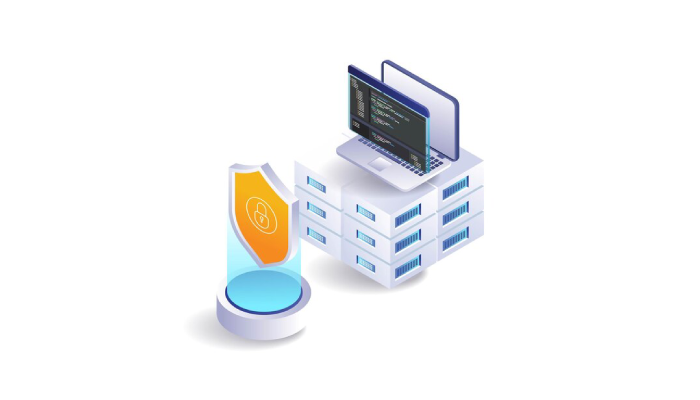
AWS Web Application Firewall: A Fully Managed Service to Block Bad Traffic and Cyber Threats
AWS Web Application Firewall (WAF) offers a fully managed cloud-based solution to protect web applications from common threats like SQL injection, XSS, and bad bots. It works by monitoring incoming HTTP(S) requests and applying user-defined rules across various AWS services such as CloudFront and Application Load Balancer. Users benefit from managed rule groups that simplify protection efforts, bot control features that distinguish good bots from harmful ones, and real-time logging integrated with CloudWatch for better visibility. AWS handles scaling, updates, and infrastructure management so customers can focus on security policies. With API support and integration with Firewall Manager, it fits well into automated workflows while providing flexible traffic filtering and DDoS protection at the application layer.
What Is AWS Web Application Firewall (WAF)?
AWS Web Application Firewall (WAF) is a cloud-based security service designed to protect web applications from common threats like SQL injection and cross-site scripting attacks. It works by inspecting incoming HTTP and HTTPS requests before they reach your backend systems, applying user-defined rules to allow, block, or count traffic based on specific conditions. These rules are grouped into Web Access Control Lists (Web ACLs) which can be applied to various AWS resources such as Amazon CloudFront, Application Load Balancer, Amazon API Gateway, AWS AppSync, Amazon Cognito, AWS App Runner, and AWS Amplify. Operating at the application layer (Layer 7), AWS WAF focuses on the content of web traffic to identify and mitigate malicious behavior. Users can create flexible rules that filter traffic based on IP addresses, headers, URIs, query strings, or even request bodies. AWS manages the underlying infrastructure, scaling, and updates, so users concentrate on crafting effective security rules rather than handling hardware or software maintenance. Real-time metrics and detailed logs are available through Amazon CloudWatch, enabling continuous monitoring and alerting. Additionally, AWS WAF integrates with AWS Firewall Manager to provide centralized rule management and compliance across multiple AWS accounts, streamlining security operations at scale.

Benefits of Using AWS WAF for Web Security
AWS WAF offers a strong layer of web security by combining managed protections and flexible controls. Its AWS-managed rule groups provide ready-made defenses against common threats like SQL injection, cross-site scripting, and account takeover fraud, which helps reduce the time and effort needed to set up effective security. The bot control feature is especially useful for distinguishing between good bots, such as search engine crawlers, and harmful bots that can scrape data or launch attacks, allowing organizations to block or limit the bad ones without disrupting legitimate traffic.
Visibility into web traffic is another key benefit. AWS WAF provides detailed logs and metrics, showing IP addresses, geographic locations, URIs, user agents, and referrers, all accessible through Amazon CloudWatch. This data supports informed decisions when adjusting security policies. Because it is a fully managed service, AWS handles all scaling, availability, patching, and updates, which means security teams can focus on policy configuration rather than infrastructure management.
Core Features of AWS WAF Explained
AWS WAF offers flexible rule creation that lets you filter web traffic based on IP addresses, HTTP headers, query strings, and even request bodies. This granularity helps tailor defenses to specific application needs. Managed rule groups come prebuilt with protections against common web exploits like SQL injection and cross-site scripting, plus automated threats, saving time and effort. Real-time metrics and logging capture detailed data on every request, which integrates seamlessly with Amazon CloudWatch for continuous monitoring and alerting. The service’s API-driven administration supports easy automation and integration with infrastructure as code tools, making it suitable for dynamic environments. Built-in Layer 7 DDoS protection detects and mitigates application-layer attacks quickly, enhancing resilience. Users can define custom responses to blocked requests, such as returning HTTP 403 status or custom messages, improving both security and user experience. AWS WAF also supports containerized applications running behind Application Load Balancers in Amazon ECS, extending protection to modern architectures. Web ACL capacity units (WCU) help measure resource use, allowing you to optimize rule configurations for cost and performance. Bot control features distinguish between good bots, like search engines, and bad bots, enabling tailored actions such as blocking or rate limiting. Continuous updates to managed rules ensure defenses stay current without any manual intervention, keeping your applications protected against evolving threats.
How AWS WAF Blocks Malicious Traffic?
AWS WAF inspects incoming HTTP(S) requests before they reach backend resources by applying Web Access Control Lists (Web ACLs) composed of multiple rules. These rules analyze various request attributes such as IP addresses, HTTP headers, URIs, and even body content to identify potential threats. When a request matches a blocking rule, AWS WAF can immediately deny access, typically returning an HTTP 403 Forbidden response or a custom message configured by the user. In addition to outright blocking, counting rules allow security teams to monitor suspicious traffic patterns without interrupting legitimate users, which helps refine and tune security policies over time. Rate-based rules also enable AWS WAF to limit excessive requests from a single source, effectively mitigating brute force attacks or scraper bots. AWS-managed rule groups automatically detect common attack patterns like SQL injection and cross-site scripting (XSS), reducing the burden on users to write complex rules. For automated threats, AWS WAF’s bot control feature distinguishes between good and bad bots, blocking or challenging harmful bots that may scrape content or attempt attacks. Integration with AWS Firewall Manager ensures consistent application of these blocking policies across multiple AWS accounts, simplifying management at scale. Real-time logging and metrics provide detailed insights into blocked requests, empowering security teams to analyze and adjust rules as threats evolve. Because AWS WAF operates at the application layer, it delivers precise filtering based on the content of web requests without affecting other network traffic, making it an efficient and targeted defense mechanism.
Managing Bot Traffic with AWS WAF
AWS WAF’s bot control capabilities provide an effective way to detect and manage various types of automated traffic, such as scrapers, crawlers, and scanners. It helps distinguish between good bots, like search engines that are allowed by default, and potentially harmful ones that can steal content or launch automated attacks. Users can configure AWS WAF to block, allow, or rate-limit bot traffic based on behavior patterns and reputation scores. Instead of outright blocking suspicious bots, the service also supports customizable actions such as CAPTCHA challenges to verify legitimate users. Bot control integrates smoothly with managed rule groups, enabling automated identification and response to emerging threats. With detailed visibility into bot traffic patterns through metrics and logs, organizations can continuously refine their rules to improve protection and reduce false positives. This layered defense not only reduces resource consumption by cutting down unwanted automated requests but also helps maintain website performance and availability. AWS WAF’s bot management works alongside other security rules to provide comprehensive protection against bot-driven threats, making it easier for businesses to defend their web applications without extensive manual intervention.
Use Cases for AWS WAF in Modern Applications
AWS WAF is well-suited for filtering malicious traffic by evaluating IP reputation, geographic location, and specific request traits, which helps protect web applications from targeted attacks. It plays a key role in preventing account takeover fraud by detecting patterns like credential stuffing and brute force login attempts, thereby blocking unauthorized access. Similarly, AWS WAF can stop fake account creation by identifying and blocking automated or fraudulent sign-ups, ensuring user authenticity. Managing bot traffic is another important use case: it enables distinguishing between harmful bots and legitimate ones, such as search engine crawlers, allowing businesses to maintain site performance without losing valuable traffic. For modern APIs, including REST and GraphQL provided via Amazon API Gateway and AWS AppSync, AWS WAF offers protection against injection attacks and abuse, securing serverless applications and mobile backends running on AWS services. It also mitigates Layer 7 DDoS attacks that specifically target web applications and APIs, reducing downtime and preserving availability. Organizations benefit from centralized rule management through AWS Firewall Manager, helping enforce compliance policies consistently across multiple accounts and resources. AWS WAF integrates smoothly with DevOps workflows, allowing automated deployment of security policies as part of continuous integration and delivery pipelines. Real-time traffic monitoring lets security teams detect anomalies and quickly adjust rules to respond to evolving threats, maintaining a strong security posture as application environments change.
How AWS WAF Works with AWS Resources?
AWS WAF attaches Web Access Control Lists (Web ACLs) directly to various AWS resources such as Amazon CloudFront distributions, Application Load Balancers (ALB), Amazon API Gateway, and AWS AppSync. By doing so, it inspects incoming HTTP(S) requests at the application layer before they reach backend systems, allowing it to block or allow traffic based on user-defined security rules. When integrated with CloudFront, AWS WAF enforces security at edge locations worldwide, providing both global content delivery and protection close to the source of traffic. For applications running on containerized or compute resources behind Application Load Balancers, AWS WAF shields these workloads by filtering malicious traffic before it reaches the ALB. Similarly, it secures REST APIs with API Gateway and GraphQL APIs with AppSync, helping prevent common API threats such as injection attacks and unauthorized access. AWS WAF also supports modern application deployment platforms like AWS App Runner and AWS Amplify, extending its protection to serverless and front-end frameworks. Centralized management is simplified through integration with AWS Firewall Manager, which allows administrators to apply consistent WAF policies across multiple AWS accounts and resources from a single pane. Real-time metrics and logs from all attached resources are fed into Amazon CloudWatch, enabling unified monitoring and alerting. AWS WAF automatically scales in line with the traffic handled by the attached resources, ensuring consistent protection during traffic surges. For critical workloads, combining AWS WAF with AWS Shield Advanced adds an extra layer of defense against large-scale DDoS attacks, enhancing overall resilience.
Automation and API Integration in AWS WAF
AWS WAF offers robust APIs that allow programmatic creation, updating, and management of Web ACLs and rules, making it a strong candidate for automation within security workflows. This API-driven approach supports embedding security policies directly into CI/CD pipelines, enabling teams to deploy and update WAF configurations as part of application releases without manual intervention. Developers can also leverage AWS SDKs to build custom applications that manage WAF rules and monitor security posture in real time. Additionally, AWS CloudFormation templates enable defining WAF resources as code, ensuring repeatable, consistent deployments across environments. Automation is key to quickly adapting to emerging threats; rules can be updated automatically based on real-time analytics or threat intelligence, reducing the window of vulnerability. Integration with AWS Firewall Manager further centralizes policy enforcement and compliance auditing across multiple accounts and regions, simplifying governance. Real-time logging from AWS WAF can be routed to analytics platforms that trigger alerts or automated responses, improving threat detection and incident response. This level of automation reduces manual errors and enhances consistency in applying security policies, especially in complex, multi-account setups. Scripts and custom tools can also monitor AWS WAF metrics to adjust rule sets or scale protections dynamically based on traffic patterns, making security both proactive and adaptive.
Fully Managed Service Benefits of AWS WAF
AWS WAF being a fully managed service means AWS takes care of the entire underlying infrastructure, including scaling, availability, patching, and software updates. This eliminates the need for customers to install or maintain any hardware or software components related to the firewall, significantly reducing operational overhead. For example, during traffic spikes or attack attempts, AWS automatically scales WAF capacity without customer intervention, ensuring continuous protection without performance degradation. Managed rule groups are another key benefit, as AWS regularly updates these to guard against new and evolving threats, so security teams can rely on up-to-date defenses without manual rule tuning. Integration with AWS Firewall Manager allows organizations to enforce consistent security policies and compliance across multiple accounts from a central dashboard, making governance simpler and more effective. Real-time monitoring and logging come built-in, with no extra setup needed, providing immediate visibility into web traffic and security events through Amazon CloudWatch. Furthermore, ongoing feature improvements and security enhancements are rolled out seamlessly, keeping the service current without requiring customer action. The pay-as-you-go pricing model means no upfront costs or infrastructure investments are necessary, allowing businesses to align expenses with actual usage. Altogether, AWS WAF’s fully managed nature frees security teams from routine maintenance tasks and lets them focus on configuring and refining policies to best protect their applications.
Frequently Asked Questions
1. How does AWS Web Application Firewall identify and block malicious web traffic effectively?
AWS WAF uses customizable rule sets and threat intelligence to monitor incoming web requests. It checks for patterns like SQL injection or cross-site scripting and blocks suspicious traffic before it reaches your application.
2. Can AWS WAF handle sudden spikes in bad traffic or complex attack patterns without affecting legitimate users?
Yes, AWS WAF is designed to scale automatically and apply rate-based rules to filter out unusual traffic bursts. This helps maintain normal access for genuine users while blocking potential attacks.
3. What are the key components of AWS WAF that help in customizing security for different web applications?
AWS WAF includes features like web ACLs (Access Control Lists), managed rule groups, and custom rules. These components allow you to tailor protections based on your application’s specific needs and threat landscape.
4. How does integrating AWS WAF with other AWS services enhance overall application security?
When combined with services like Amazon CloudFront, AWS Shield, and AWS Firewall Manager, AWS WAF provides multi-layered protection. This integration helps improve threat detection, simplifies firewall management, and boosts resistance against DDoS attacks.
5. What logging and monitoring capabilities does AWS WAF offer to help analyze blocked traffic and improve security rules?
AWS WAF supports detailed logging of web requests through Amazon Kinesis Data Firehose or Amazon S3. These logs let you review blocked requests, assess attack trends, and fine-tune your rules for better protection over time.
TL;DR AWS Web Application Firewall (WAF) is a fully managed cloud service that protects web applications from common cyber threats like SQL injection, cross-site scripting, and bot attacks. It lets you create flexible security rules, use AWS-managed protections, and gain detailed visibility through real-time logging and metrics. Integrated with services like CloudFront, ALB, and API Gateway, AWS WAF offers automation via APIs and supports centralized rule management with AWS Firewall Manager. Its pay-as-you-go pricing covers Web ACLs, rules, and traffic processed, making it adaptable for various use cases including fraud prevention, bot control, and API protection. Combined with AWS Shield, it enhances DDoS defense, all while AWS handles infrastructure scaling and updates to reduce operational overhead.



